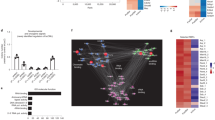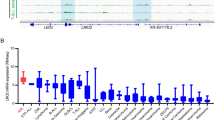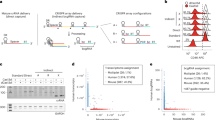Abstract
The transcription factor CREB (cAMP Response-Element Binding Protein) is overexpressed in the majority of acute myeloid leukemia (AML) patients, and this is associated with a worse prognosis. Previous work revealed that CREB overexpression augmented AML cell growth, while CREB knockdown disrupted key AML cell functions in vitro. In contrast, CREB knockdown had no effect on long-term hematopoietic stem cell activity in mouse transduction/transplantation assays. Together, these studies position CREB as a promising drug target for AML. To test this concept, a small molecule inhibitor of CREB, XX-650-23, was developed. This molecule blocks a critical interaction between CREB and its required co-activator CBP (CREB Binding Protein), leading to disruption of CREB-driven gene expression. Inhibition of CBP–CREB interaction induced apoptosis and cell-cycle arrest in AML cells, and prolonged survival in vivo in mice injected with human AML cells. XX-650-23 had little toxicity on normal human hematopoietic cells and tissues in mice. To understand the mechanism of XX-650-23, we performed RNA-seq, ChIP-seq and Cytometry Time of Flight with human AML cells. Our results demonstrate that small molecule inhibition of CBP–CREB interaction mostly affects apoptotic, cell-cycle and survival pathways, which may represent a novel approach for AML therapy.
This is a preview of subscription content, access via your institution
Access options
Subscribe to this journal
Receive 12 print issues and online access
$259.00 per year
only $21.58 per issue
Buy this article
- Purchase on Springer Link
- Instant access to full article PDF
Prices may be subject to local taxes which are calculated during checkout






Similar content being viewed by others
References
Tallman MS, Gilliland DG, Rowe JM . Drug therapy for acute myeloid leukemia. Blood 2005; 106: 1154–1163.
Ferrara F, Schiffer CA . Acute myeloid leukaemia in adults. Lancet 2013; 381: 484–495.
Creutzig U, van den Heuvel-Eibrink MM, Gibson B, Dworzak MN, Adachi S, de Bont E et al. Diagnosis and management of acute myeloid leukemia in children and adolescents: recommendations from an international expert panel. Blood 2012; 120: 3187–3205.
Schultz KA, Chen L, Chen Z, Kawashima T, Oeffinger KC, Woods WG et al. Health conditions and quality of life in survivors of childhood acute myeloid leukemia comparing post remission chemotherapy to BMT: a report from the children's oncology group. Pediatr Blood Cancer 2014; 61: 729–736.
Conkright MD, Montminy M . CREB: the unindicted cancer co-conspirator. Trends Cell Biol 2005; 15: 457–459.
Pigazzi M, Ricotti E, Germano G, Faggian D, Arico M, Basso G . cAMP response element binding protein (CREB) overexpression CREB has been described as critical for leukemia progression. Haematologica 2007; 92: 1435–1437.
Pigazzi M, Manara E, Bresolin S, Tregnago C, Beghin A, Baron E et al. MicroRNA-34b promoter hypermethylation induces CREB overexpression and contributes to myeloid transformation. Haematologica 2013; 98: 602–610.
Shankar DB, Cheng JC, Kinjo K, Federman N, Moore TB, Gill et al. The role of CREB as a proto-oncogene in hematopoiesis and in acute myeloid leukemia. Cancer Cell 2005; 7: 351–362.
Shankar DB, Cheng JC, Sakamoto KM . Role of cyclic AMP response element binding protein in human leukemias. Cancer 2005; 104: 1819–1824.
Cheng JC, Kinjo K, Judelson DR, Chang J, Wu WS, Schmid I et al. CREB is a critical regulator of normal hematopoiesis and leukemogenesis. Blood 2008; 111: 1182–1192.
Zhang X, Odom DT, Koo SH, Conkright MD, Canettieri G, Best J et al. Genome-wide analysis of cAMP-response element binding protein occupancy, phosphorylation, and target gene activation in human tissues. Proc Natl Acad Sci USA 2005; 102: 4459–4464.
Vo N, Goodman RH . CREB-binding protein and p300 in transcriptional regulation. J Biol Chem 2001; 276: 13505–13508.
Radhakrishnan I, Perez-Alvarado GC, Parker D, Dyson HJ, Montminy MR, Wright PE . Structural analyses of CREB-CBP transcriptional activator-coactivator complexes by NMR spectroscopy: implications for mapping the boundaries of structural domains. J Mol Biol 1999; 287: 859–865.
Radhakrishnan I, Perez-Alvarado GC, Parker D, Dyson HJ, Montminy MR, Wright PE . Solution structure of the KIX domain of CBP bound to the transactivation domain of CREB: a model for activator:coactivator interactions. Cell 1997; 91: 741–752.
Best JL, Amezcua CA, Mayr B, Flechner L, Murawsky CM, Emerson B et al. Identification of small-molecule antagonists that inhibit an activator: coactivator interaction. Proc Natl Acad Sci USA 2004; 101: 17622–17627.
Uttarkar S, Dukare S, Bopp B, Goblirsch M, Jose J, Klempnauer KH . Naphthol AS-E phosphate inhibits the activity of the transcription factor Myb by blocking the interaction with the KIX domain of the coactivator p300. Mol Cancer Ther 2015; 14: 1276–1285.
Jiang M, Li BX, Xie F, Delaney F, Xiao X . Design, synthesis, and biological evaluation of conformationally constrained analogues of naphthol AS-E as inhibitors of CREB-mediated gene transcription. J Med Chem 2012; 55: 4020–4024.
Li BX, Yamanaka K, Xiao X . Structure-activity relationship studies of naphthol AS-E and its derivatives as anticancer agents by inhibiting CREB-mediated gene transcription. Bioorg Med Chem 2012; 20: 6811–6820.
Xie F, Li BX, Broussard C, Xiao X . Identification, synthesis and evaluation of substituted benzofurazans as inhibitors of CREB-mediated gene transcription. Bioorg Med Chem Lett 2013; 23: 5371–5375.
Li BX, Xiao X . Discovery of a small-molecule inhibitor of the KIX-KID interaction. Chembiochem 2009; 10: 2721–2724.
Bijnsdorp IV, Giovannetti E, Peters GJ . Analysis of drug interactions. Methods Mol Biol 2011; 731: 421–434.
Whitfield ML, Sherlock G, Saldanha AJ, Murray JI, Ball CA, Alexander KE et al. Identification of genes periodically expressed in the human cell cycle and their expression in tumors. Mol Biol Cell 2002; 13: 1977–2000.
Trapnell C, Pachter L, Salzberg SL . TopHat: discovering splice junctions with RNA-Seq. Bioinformatics 2009; 25: 1105–1111.
Trapnell C, Hendrickson DG, Sauvageau M, Goff L, Rinn JL, Pachter L . Differential analysis of gene regulation at transcript resolution with RNA-seq. Nat Biotechnol 2013; 31: 46–53.
Ferrari R, Su T, Li B, Bonora G, Oberai A, Chan Y et al. Reorganization of the host epigenome by a viral oncogene. Genome Res 2012; 22: 1212–1221.
Thomas-Chollier M, Herrmann C, Defrance M, Sand O, Thieffry D, van Helden J . RSAT peak-motifs: motif analysis in full-size ChIP-seq datasets. Nucleic Acids Res 2012; 40: e31.
Livak KJ, Schmittgen TD . Analysis of relative gene expression data using real-time quantitative PCR and the 2(-Delta Delta C(T)) Method. Methods 2001; 25: 402–408.
Fienberg HG, Simonds EF, Fantl WJ, Nolan GP, Bodenmiller B . A platinum-based covalent viability reagent for single-cell mass cytometry. Cytometry A 2012; 81: 467–475.
Finck R, Simonds EF, Jager A, Krishnaswamy S, Sachs K, Fantl W et al. Normalization of mass cytometry data with bead standards. Cytometry A 2013; 83: 483–494.
Bendall SC, Simonds EF, Qiu P, Amir el AD, Krutzik PO, Finck R et al. Single-cell mass cytometry of differential immune and drug responses across a human hematopoietic continuum. Science 2011; 332: 687–696.
Gang EJ, Hsieh YT, Pham J, Zhao Y, Nguyen C, Huantes S et al. Small-molecule inhibition of CBP/catenin interactions eliminates drug-resistant clones in acute lymphoblastic leukemia. Oncogene 2014; 33: 2169–2178.
Illendula A, Pulikkan JA, Zong H, Grembecka J, Xue L, Sen S et al. Chemical biology. A small-molecule inhibitor of the aberrant transcription factor CBFbeta-SMMHC delays leukemia in mice. Science 2015; 347: 779–784.
Tapias A, Ciudad CJ, Noe V . Transcriptional regulation of the 5'-flanking region of the human transcription factor Sp3 gene by NF-1, c-Myb, B-Myb, AP-1 and E2F. Biochim Biophys Acta 2008; 1779: 318–329.
Xu H, Inouye M, Hines ER, Collins JF, Ghishan FK . Transcriptional regulation of the human NaPi-IIb cotransporter by EGF in Caco-2 cells involves c-myb. Am J Physiol Cell Physiol 2003; 284: C1262–C1271.
Pattabiraman DR, Gonda TJ . Role and potential for therapeutic targeting of MYB in leukemia. Leukemia 2013; 27: 269–277.
Miettinen HM . Regulation of human formyl peptide receptor 1 synthesis: role of single nucleotide polymorphisms, transcription factors, and inflammatory mediators. PLoS One 2011; 6: e28712.
Portt L, Norman G, Clapp C, Greenwood M, Greenwood MT . Anti-apoptosis and cell survival: a review. Biochim Biophys Acta 2011; 1813: 238–259.
Wang JM, Chao JR, Chen W, Kuo ML, Yen JJ, Yang-Yen HF . The antiapoptotic gene mcl-1 is up-regulated by the phosphatidylinositol 3-kinase/Akt signaling pathway through a transcription factor complex containing CREB. Mol Cell Biol 1999; 19: 6195–6206.
Eliseev RA, Vanwinkle B, Rosier RN, Gunter TE . Diazoxide-mediated preconditioning against apoptosis involves activation of cAMP-response element-binding protein (CREB) and NFkappaB. J Biol Chem 2004; 279: 46748–46754.
Konopleva M, Contractor R, Tsao T, Samudio I, Ruvolo PP, Kitada S et al. Mechanisms of apoptosis sensitivity and resistance to the BH3 mimetic ABT-737 in acute myeloid leukemia. Cancer Cell 2006; 10: 375–388.
Bonnet D, Dick JE . Human acute myeloid leukemia is organized as a hierarchy that originates from a primitive hematopoietic cell. Nat Med 1997; 3: 730–737.
Majeti R, Weissman IL . Human acute myelogenous leukemia stem cells revisited: there's more than meets the eye. Cancer Cell 2011; 19: 9–10.
Kwon EM, Raines MA, Blenis J, Sakamoto KM . Granulocyte-macrophage colony-stimulating factor stimulation results in phosphorylation of cAMP response element-binding protein through activation of pp90RSK. Blood 2000; 95: 2552–2558.
Sakamoto KM, Fraser JK, Lee HJ, Lehman E, Gasson JC . Granulocyte-macrophage colony-stimulating factor and interleukin-3 signaling pathways converge on the CREB-binding site in the human egr-1 promoter. Mol Cell Biol 1994; 14: 5975–5985.
Wong A, Sakamoto KM . Granulocyte-macrophage colony-stimulating factor induces the transcriptional activation of egr-1 through a protein kinase A-independent signaling pathway. J Biol Chem 1995; 270: 30271–30273.
Boulon S, Dantonel JC, Binet V, Vie A, Blanchard JM, Hipskind RA et al. Oct-1 potentiates CREB-driven cyclin D1 promoter activation via a phospho-CREB- and CREB binding protein-independent mechanism. Mol Cell Biol 2002; 22: 7769–7779.
Desdouets C, Matesic G, Molina CA, Foulkes NS, Sassone-Corsi P, Brechot C et al. Cell cycle regulation of cyclin A gene expression by the cyclic AMP-responsive transcription factors CREB and CREM. Mol Cell Biol 1995; 15: 3301–3309.
Burch PM, Yuan Z, Loonen A, Heintz NH . An extracellular signal-regulated kinase 1- and 2-dependent program of chromatin trafficking of c-Fos and Fra-1 is required for cyclin D1 expression during cell cycle reentry. Mol Cell Biol 2004; 24: 4696–4709.
Chae HD, Mitton B, Lacayo NJ, Sakamoto KM . Replication factor C3 is a CREB target gene that regulates cell cycle progression through the modulation of chromatin loading of PCNA. Leukemia 2015; 29: 1379–1389.
Grembecka J, He S, Shi A, Purohit T, Muntean AG, Sorenson RJ et al. Menin-MLL inhibitors reverse oncogenic activity of MLL fusion proteins in leukemia. Nat Chem Biol 2012; 8: 277–284.
Acknowledgements
We thank Kai Fu and Jing Lu for analysis of ChIP-seq and RNA-seq data. In vivo serum measurements of XX-650-23 were performed in collaboration with Ludmila Alexandrova, PhD, at the Stanford University Mass Spectrometry (SUMS) core facility. Surface Plasmon Resonance (Biacore) analysis was performed in collaboration with Michael Eckart, PhD, at the Stanford Protein and Nucleic Acid (PAN) facility. In vivo animal imaging was performed in collaboration with the Stanford Small Animal Imaging (SCI3) facility, directed by Timothy Doyle, PhD. This research was supported by NIH R01 HL75826, Maxfield Foundation, SPARK program and Child Health Research Institute Lucile Packard Foundation for Children’s Health, Leukemia and Lymphoma Society of America (SLP-8009-15), Pediatric Cancer Research Foundation, Hyundai Hope on Wheels (#02500CA) (KMS), NIH R01 GM087305 (XX), and by the American Cancer Society Greeley & Seattle Gala/Friends of Rob Kinas Postdoctoral Fellowship, Bear Necessities and Jane C Ventura Charitable Trust, Harvey Cohen Endowment, and the Stanford University Dean’s Post-Doctoral Fellowship program (BM).
Author contributions
BM and HDC designed research, performed research, analyzed data and wrote the paper. KH, RD, BCT, AK, FX, BXL and BXL performed research. GAD, RF, KD performed research and analyzed data. GD, GN, MRB, EML, GN, MP and XX analyzed data. NL collected and provided primary cells from AML patients. KMS designed research, analyzed data and wrote the paper.
Author information
Authors and Affiliations
Corresponding author
Ethics declarations
Competing interests
GN has personal financial interest in the company DVS Sciences, the manufacturer that produced some of the reagents and instrumentation used in this manuscript. The remaining authors declare no conflict of interest.
Additional information
Supplementary Information accompanies this paper on the Leukemia website
Supplementary information
Rights and permissions
About this article
Cite this article
Mitton, B., Chae, HD., Hsu, K. et al. Small molecule inhibition of cAMP response element binding protein in human acute myeloid leukemia cells. Leukemia 30, 2302–2311 (2016). https://doi.org/10.1038/leu.2016.139
Received:
Revised:
Accepted:
Published:
Issue Date:
DOI: https://doi.org/10.1038/leu.2016.139
This article is cited by
-
Complex roles of cAMP–PKA–CREB signaling in cancer
Experimental Hematology & Oncology (2020)
-
What turns CREB on? And off? And why does it matter?
Cellular and Molecular Life Sciences (2020)
-
Targeting transcription factors in acute myeloid leukemia
International Journal of Hematology (2019)
-
Tolerance to sustained activation of the cAMP/Creb pathway activity in osteoblastic cells is enabled by loss of p53
Cell Death & Disease (2018)
-
Peptidomimetic blockade of MYB in acute myeloid leukemia
Nature Communications (2018)



